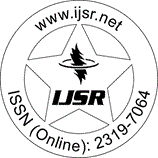Downloads: 114
India | Computer Science Engineering | Volume 4 Issue 5, May 2015 | Pages: 2289 - 2293
Implementing Java Distributed Objects with JDBC
Abstract: Organizations rely on information to make effective business decisions and corporate intranets are changing the way organizations conduct business. As networking technologies continue to improve, with increasing bandwidth and reliability, effective distributed computing is becoming a reality. Organizations are relying on internet technologies to be the conduit for employees to access and manipulate corporate information. Having timely and accurate information is essential for effective management practices and optimization of limited resources. Information can be stored effectively and efficiently in Database Management Systems (DBMS), a software system that manages the data integrity, storage and access of data in a database. The goal of a database is to reduce redundant storage of information throughout an organization. Java is destined to become a language for distributed computing. Java Development Kit (JDK) comes with a broad range of classes for network and database programming. Java Database Connectivity (JDBC) is one such class for providing client/server database access
Keywords: JDBC, Applet, RMI, CORBA, SOAP
How to Cite?: Bhawna, Sumit Wadhwa, "Implementing Java Distributed Objects with JDBC", Volume 4 Issue 5, May 2015, International Journal of Science and Research (IJSR), Pages: 2289-2293, https://www.ijsr.net/getabstract.php?paperid=SUB154795, DOI: https://dx.doi.org/10.21275/SUB154795
